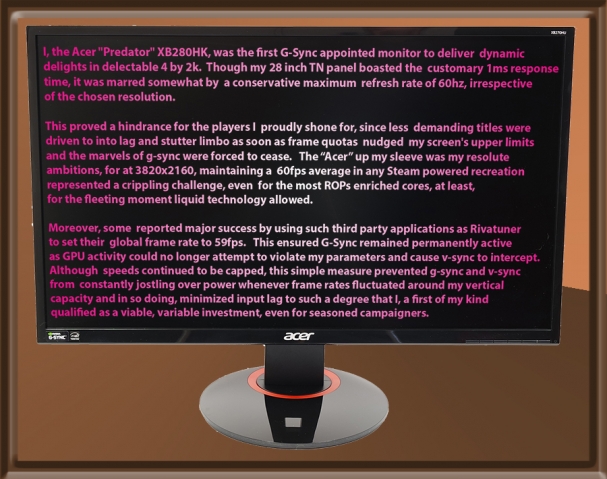Perfect Synchronicity.
We begin this concise graphically pertinent piece with a literary dispute. A multitude of expressions I use to interpret facts, qualify opinions and provide the occasional twist of linguistic amusement are accompanied by a supercilious red squiggle. You know the one. The grammatical equivalent of a security guard in an Apple Store, silently scrutinizing your every move, comparing your body language and browsing habits to what his supervisor considers synonymous with those of a fully fledged “appolyte”.
You’re instinctively aware of his presence, even if his burly figure lurks behind the shop’s walls and his beady eyes are peering though an all seeing lens. Fail to solicit assistance in a timely fashion, and you will promptly be earmarked as an atypical customer, vulnerable to the “new world orchard’s” pallid preachers, their slick sales spiel and haughty insistence that every computational investment you have made prior to meeting them has been naive and misguided.
The automated dictionaries fostered in every form of desktop publishing are similarly dictatorial, the if the word isn’t part of Doctor Collins’ legendary vocabulary, it doesn’t exist, even if Professor Merriam Webster disagrees. In hastening to the point, the word “Synchronicity” was spuriously rejected by Chrome’s resident Spell Patrol despite harvesting some 5 million hits on Google. In the immeasurably esteemed view of Lord Oxford, the term has two meanings.
1: The simultaneous occurrence of events with no discernible casual connection.
2. The State of being synchronous or synchronic.
Despite the word police also declaring Syncronic as an invalid adjective, both these definitions have a significant bearing on the subject in hand. A puzzle comprising just two pieces, simple on the surface, complex at its core and one that initially confounded hardware manufacturers and driver developers in the graphics industry long before ruby and emerald tyranny took root.
Gather round we attempt to tear down an age old mystery, to pick apart a paradox of frame fragmentation that has plagued panels and perplexed players of every era, to find the formula and market the miracles of…..
“Perfect Synchronicity”
This phrase originates from a concept invented by the Swiss psychiatrist Carl Jung. I first heard it used by “Derren Brown” to describe the mental state of two strangers after they had simultaneously thought of exactly the same thing and scribbled identical sketches on separate pieces of paper.
In layman’s language, Jung’s philosophy declared that two or more meaningfully connected events could not be interpreted as a common coincidence.
In the context of recreational computing perfect syncronicity will occur when a video card’s pictorial compositions meet it’s monitor’s desires with flawless clarity and no waisted paint. To better understand this analogy, let us examine the flawed line of communication between GPU and VDU.

In the early 2010′ s. When an avid gamer fired up the latest steam trend and begins darting down corridors, traversing walls, strafing across terrain and amassing ammunition, both the GPU and display worked hard to fulfil their obligations. Their protocol was straightforward. An image was created by the GPU, then assigned to one of two potions of its memory, uniformly known as the “frame buffer”. As the hand-over was completed, the segment containing the data was defined as the “front or primary buffer” and immediately referred to the display.
At the same juncture, the GPU went on to forge the next frame in the sequence and allocated itself a further portion of VRAM in which to store it, known as the “back or secondary” buffer. As soon as that image has been finalized, these two segments swapped places and the entire cycle repeated itself until our gamer was exhausted. The procedure, appropriately entitled “double buffering”, ensured the GPU could continuously generate new frames whist those already composed were always available for the monitor to scan.
What could possibly go awry in implementing such a simple and logical modus operandi? As it happens, a fair bit. For all his toil and tolerance, our monitor was not the most versatile creature and could only receive frames from the video card at a specific number of intervals per second, collectively defined as the refresh rate. If these did not coincide with the GPU’s activities, any frame that arrived in the middle of an interval was effectively sliced in two, resulting in fragments of certain frames being combined with others and presenting the player with a crudely composited image. A profoundly undesirable phenomenon aptly christened “tearing”.
If we think of the display’s refresh cycles as a set of revolving doors operating at a fixed speed and imagine the frames to be varying numbers of people passing though them, we can understand that as frame rates rose, the problem would become more pronounced since there was statistically higher risk of images being trapped and torn between scans, just as several people might pile up in a single division of the doors. In serious cases, as many four incomplete frames could be visible at once. Higher refresh rates helped to alleviate the problem but only by lengthening the odds of its symptoms, as opposed to addressing the underlying cause. Were there any more decisive remedies? Perhaps, though as ever, the notorious volatility of the gaming community ensured that a Paladin’s cure was a Barbarian’s curse.





